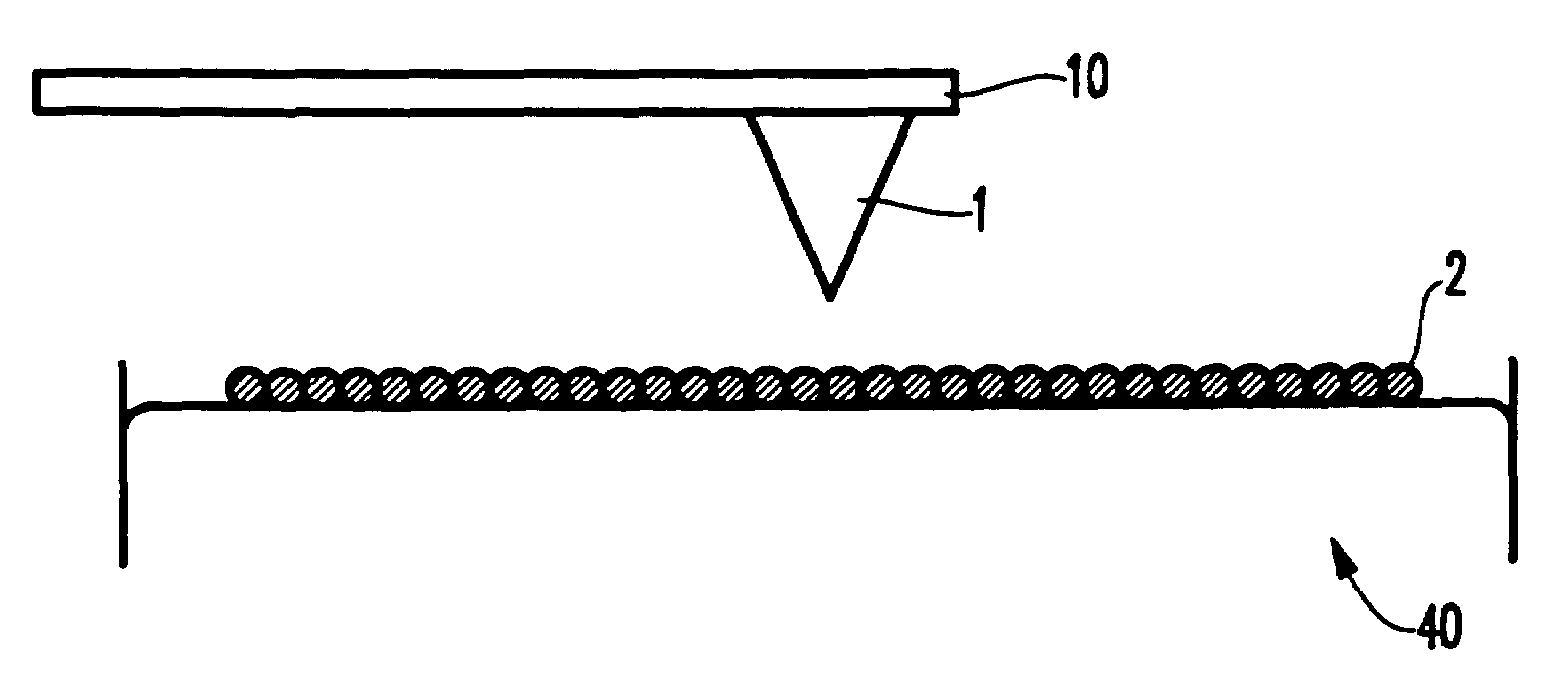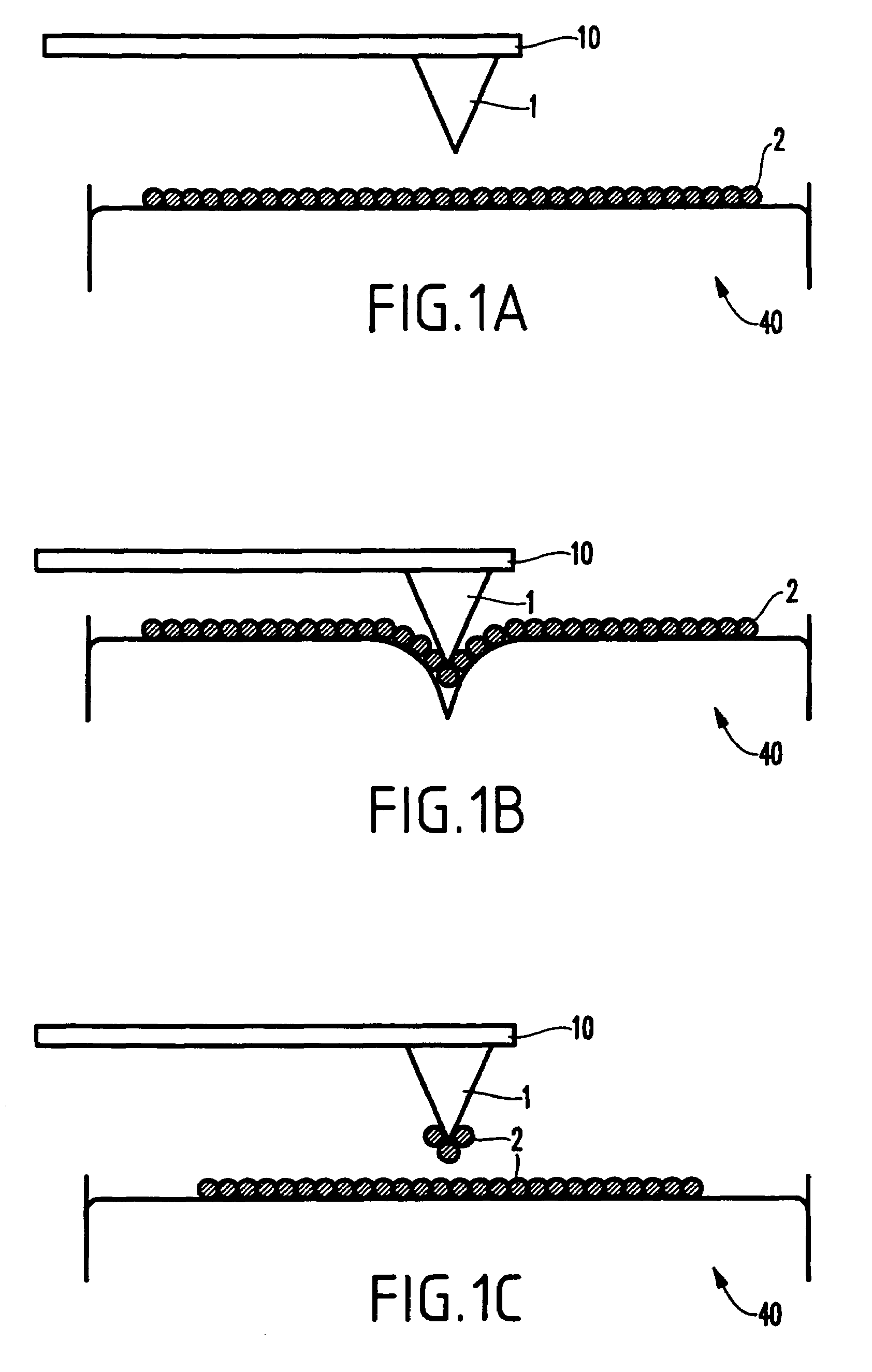Scanning probe microscopy tips composed of nanoparticles and methods to form same
- Summary
- Abstract
- Description
- Claims
- Application Information
AI Technical Summary
Benefits of technology
Problems solved by technology
Method used
Image
Examples
Embodiment Construction
[0027]As mentioned above, there is a need for a scanning probe microscope with improved spatial resolution. In order to increase the spatial resolution, the invention forms the microscope probe tip using chemically synthesized nanoparticles. The advantage conferred by a tip coated with chemically synthesized nanoparticles is that the region on the tip that interacts with the substrate is limited to a few nanoparticles. For a tip coated with magnetic nanoparticles, this region is much smaller than the interaction-region on MFM tips fabricated by conventional processes. The smaller interaction-region leads to higher spatial resolution.
[0028]In a preferred embodiment of the present invention, the process of coating the tip is shown in sequence in FIGS. 1(a), 1(b), and 1(c). FIG. 1 is not drawn to scale; wherein nanoparticles have a typical diameter of 2 nm-20 nm; the tip apex has a typical diameter of 20 nm-50 nm; and the tip has a typical height of 10 μm-30 μm. A nonmagnetic silicon A...
PUM
| Property | Measurement | Unit |
|---|---|---|
| Fraction | aaaaa | aaaaa |
| Diameter | aaaaa | aaaaa |
| Diameter | aaaaa | aaaaa |
Abstract
Description
Claims
Application Information
 Login to View More
Login to View More - R&D
- Intellectual Property
- Life Sciences
- Materials
- Tech Scout
- Unparalleled Data Quality
- Higher Quality Content
- 60% Fewer Hallucinations
Browse by: Latest US Patents, China's latest patents, Technical Efficacy Thesaurus, Application Domain, Technology Topic, Popular Technical Reports.
© 2025 PatSnap. All rights reserved.Legal|Privacy policy|Modern Slavery Act Transparency Statement|Sitemap|About US| Contact US: help@patsnap.com



